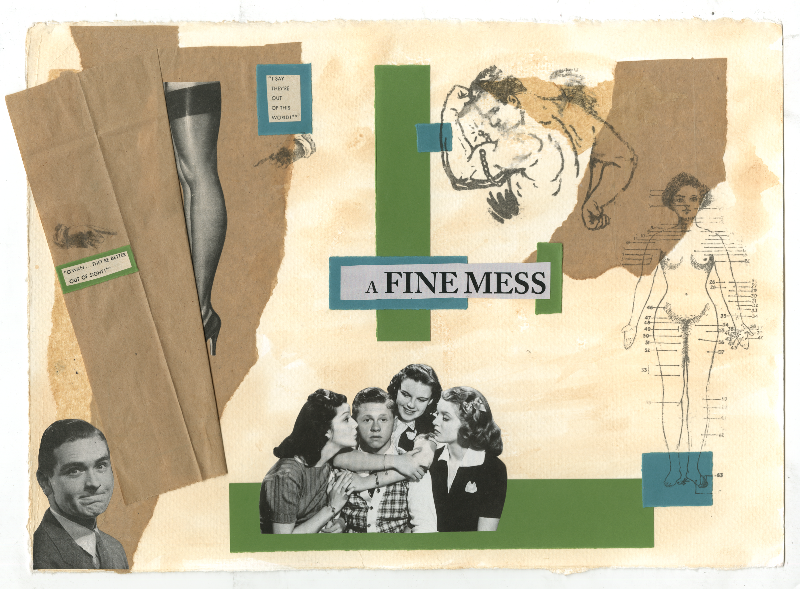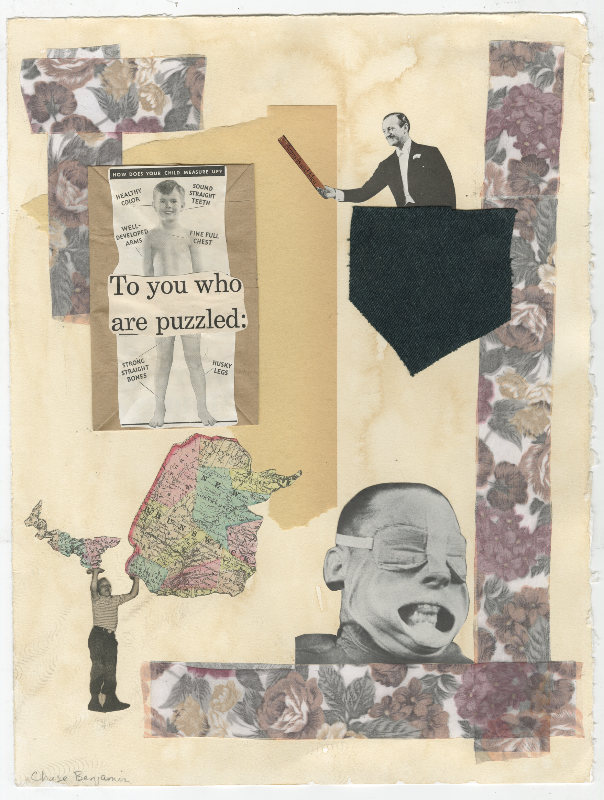*Disclaimer: Being transgender is different for each person. This is the story of one trans man from NBCCD.
Not something you see every day, a bottle marked “The Amazing Testosterone.” Stranger still, the disclaimer printed on the back of the bottle. This handmade ceramic curiosity, a play on the ‘miracle cures’ of old, reveals a hidden aspect of its maker, Chase Benjamin Plourde.

Plourde is a young man. You can tell just by looking at him. There is nothing to give away the fact that, up until four years ago, he was perceived as a young woman. His transition gives him a special window into the gender norms of our culture. One of the side effects listed on the bottle is “increase in privilege.”
“It’s weird having both experiences,” says Chase. “You can talk about how men are treated differently or how women are treated differently, but you never really have both experiences. I have that now. The saddest thing was that I couldn’t interact with kids the same way. I’ve worked in summer camps, I’ve worked with kids for a long time, but now there is that added barrier, that they think because I’m a man I could have bad intentions. And I can’t just walk up to girls and say hi so easily, because they think I could be a creep and trying to hit on them. It’s weird because that’s never what I’m doing.”

Being treated differently is one thing, but Plourde was also intrigued to find that even his own emotions were effected. When he started taking testosterone to transform his body, an injection process he repeats on a weekly basis, it changed the way his emotions are embodied and expressed. While his observations are not reflective of the lived experiences of all men and women, they could shed light on where some gender-based expectations come from. On the bottle, he includes inability to cry as a side effect of testosterone.
“I was never one to cry a lot before testosterone, but I experienced emotions completely differently than I do now. When I was upset, it was all in my head. I’d think a lot about whatever was upsetting me, blaming myself, becoming anxious or sad. Eventually, I would end up crying and releasing that negative energy. In turn, making myself feel better. A few months into taking testosterone, I noticed a complete shift in how my body was experiencing anger or frustration. It was no longer in my mind, but in my physical body. My muscles would tense, I’d start sweating, and my face would get beat red. I felt like my whole body was under an incredible amount of pressure. In that case, all you want to do is find a way to release the pressure. So, I had to do physical things to release that energy. Go for walks, exercise, take a break from what I was doing to calm myself down. Since that first year, I’ve gotten used to experiencing my emotions more physically, than mentally.”
This bottle was made for the recent Liquids, Creams & Gels online ceramics exhibition curated by Mariko Paterson of Forage Studios, and co-hosted by Danielle Hogan with the Gynocratic Art Gallery. This wide-open theme got Plourde thinking, and as is often his way, he landed on vintage imagery as a way to tell his story.

“I am very drawn to the vintage male figure – men and moustaches. I think I relate, or I wish I could be like that – a cool guy with a cool moustache. I would love to one day own an antique/oddity shop and wear suspenders and bowtie everyday.”
It is little wonder that Plourde has a fascination with gender depictions of different eras. This interest comes across in the transfer art he designs for his pottery and in his related collage work, including a recent series that portrays the stages of life. “Puberty” and ‘Second Puberty’ tell the story of the changing of the body, something Plourde has undergone twice in his life.

Many of the changes Plourde has experienced have been to his body – the position of mass on his torso and face has shifted, his voice has deepened, hair has grown on many parts of his body. It is hard to imagine what it would feel like from the inside to watch your body transform. Nonetheless, we can observe the positive changes in the individual as their body moves into closer sync with their identities.
“Over the past three years,” says Plourde, “I’ve gotten much better at accepting what I look like, and how to work with that. I have gotten so much more confident in myself. It’s a complete 180 from where I was.”
In the recent NBCCD Faculty Exhibition, Personna, Plourde showcased a clay sculpture which boldly deals with this sensitive subject-matter. “Self-Made Man” is about building an exterior form which more closely matches the heart of the person, and about shifting ideas of gender identity and sexual orientation that can occur over the course of a life. It also speaks to the limitations.
“On the back it says ‘You Can’t Change Your Bones.’ No matter how much I work out, and even though my shoulders have gotten bigger – I can’t change my bones, my DNA, the way I speak,” says Plourde. “That’s a big part of that sculpture. It also has words, like ‘Tranny,’ crossed out. And then it says ‘Man.’ Then there’s the chemical makeup of testosterone, that’s on it, and then the scars are there. I hadn’t had top surgery when I made it, but it’s to represent that. It’s also about stitching yourself together as who you are supposed to be.”

For those of us who have never felt an aversion to the gender-specific parts of our own bodies, it is difficult to relate to the dysphoria felt by some trans people before and during transition.
“It’s the feeling of knowing that certain body parts are not supposed to be there. It’s like if you woke up one day and you had a penis growing out of your elbow. You would be worried about it, you would try to hide it, you wouldn’t want it dangling from your body. It’s like that.”
Plourde’s successful and accepted transition is a testament to our times. He has had the chance to build his own identity as a trans man, and find ways to contribute to his community so that he feels respected and supported. First as a student in the NBCCD Ceramics program, and now as the Studio Technician for Foundation Visual Arts and a manager of The Craft & Design Shop, Plourde plays an assertive role in the culture of our community.

“I find people are super scared to ask questions, because they’re afraid I’ll get angry because it’s such a personal subject,” says Plourde. “When someone has a question, I’ll answer them. It’s kind of cool to me that people are interested. They only hate you when they don’t understand you. I don’t like fighting hate with hate, and I would much rather sit down and have a conversation. I don’t think I’ve ever had an experience when someone said something mean about the fact that I’m Trans to my face. Being at the school has been really great.”
This is not the experience of every trans person, and there is still more to be done to fortify the framework of acceptance in our society. Each time Chase Benjamin Plourde shares a piece of himself with his work, there’s always a chance it may rub someone the wrong way. But his work is an offer to help us understand. Art has a vital role to play by creating opportunities for asking questions and challenging assumptions, and providing a more visceral, visual way of explaining outside perspectives.
“Art makes certain topics easier to digest. Instead of reading a book, you can look at art and see and experience something you can relate to. It’s the exact same difference between a novel and a storybook – it makes the concept easier to understand.”
Written by Allison Green
